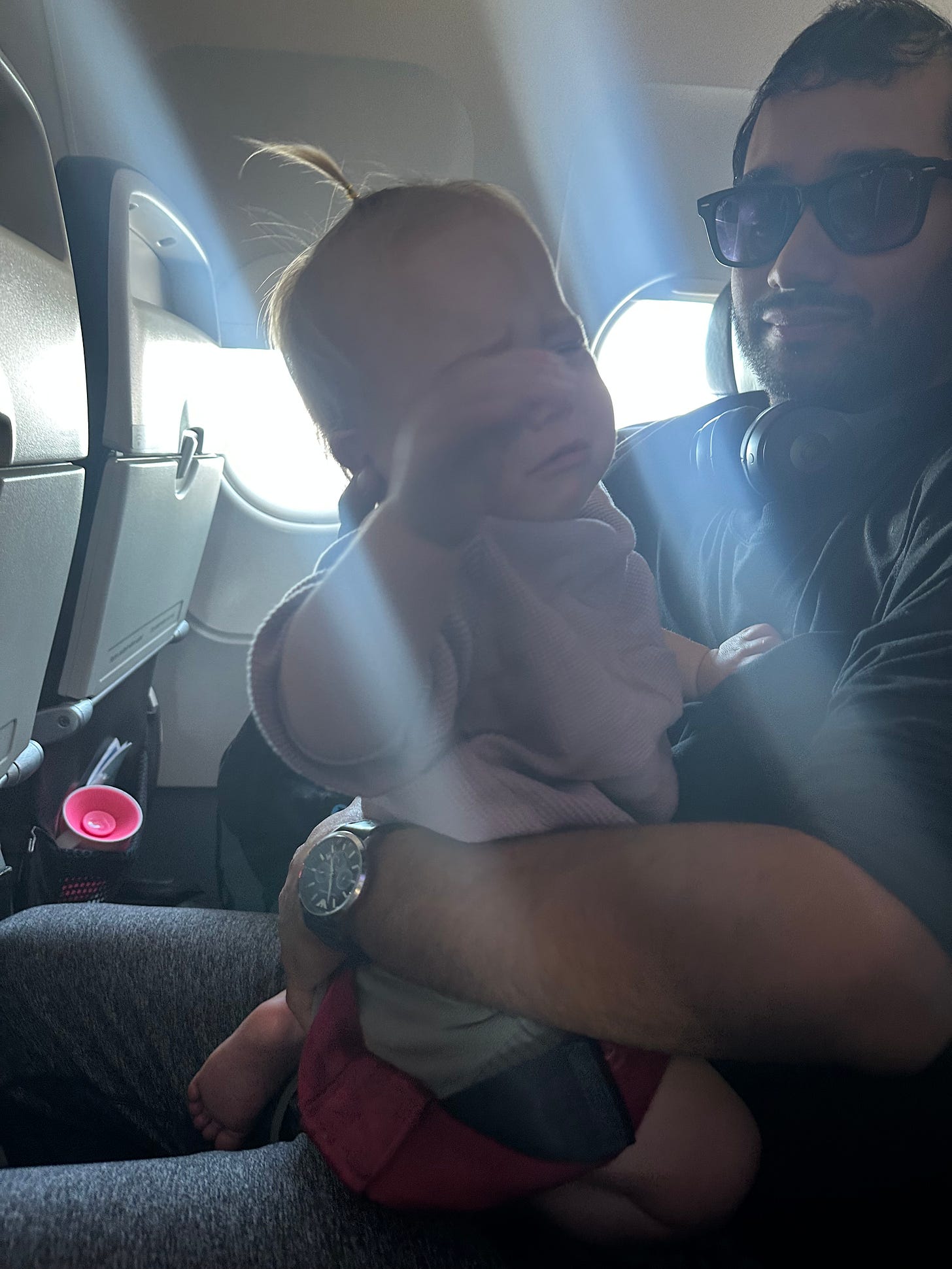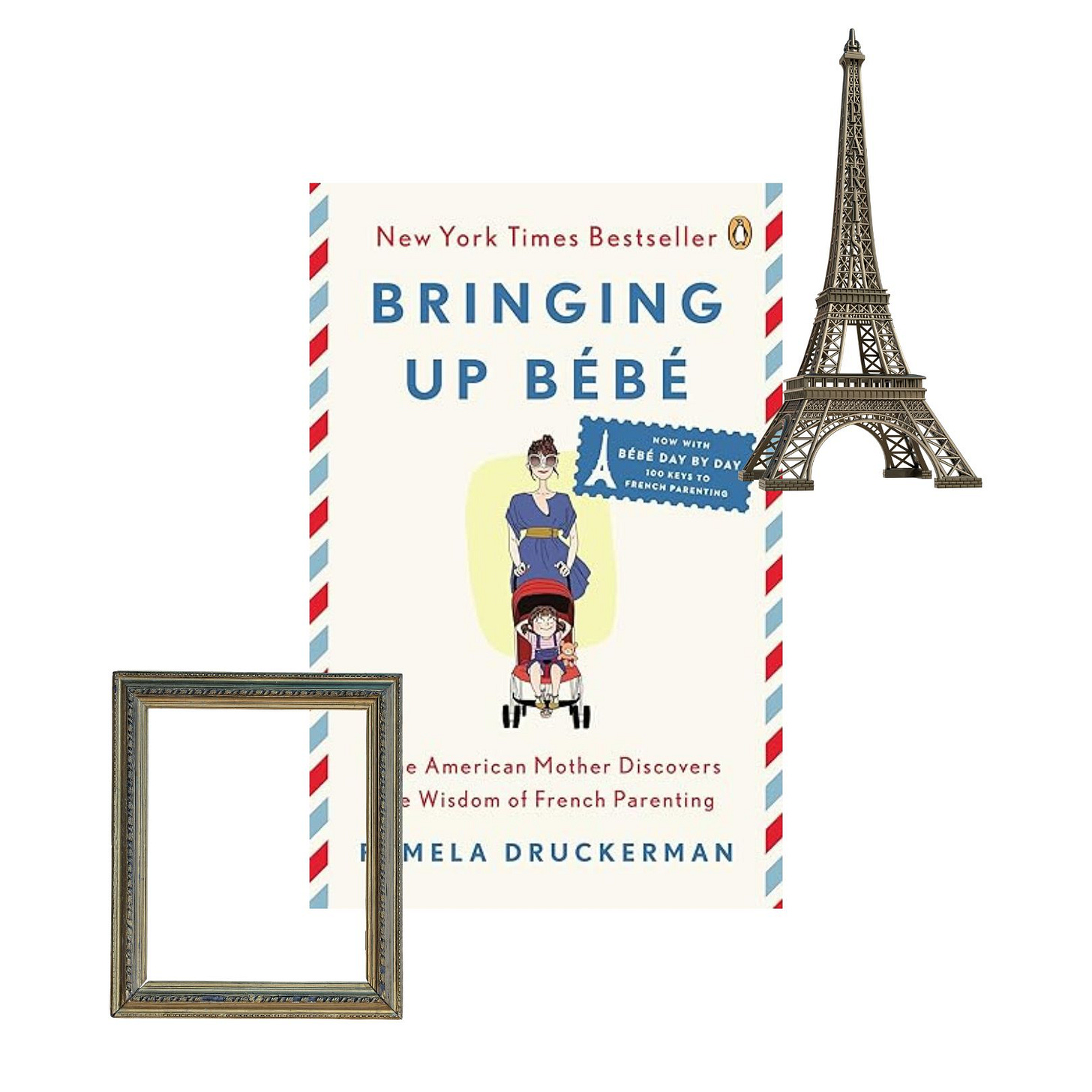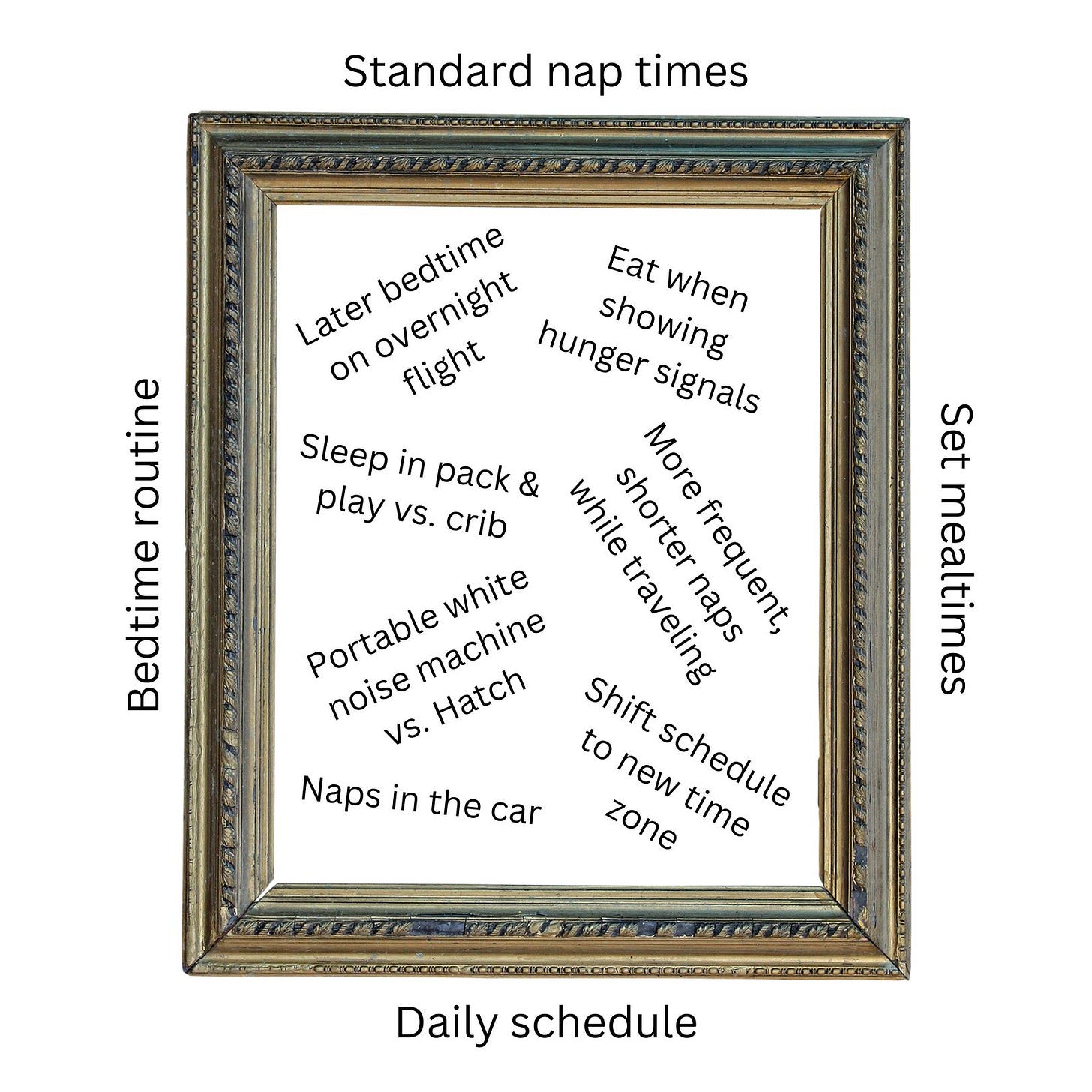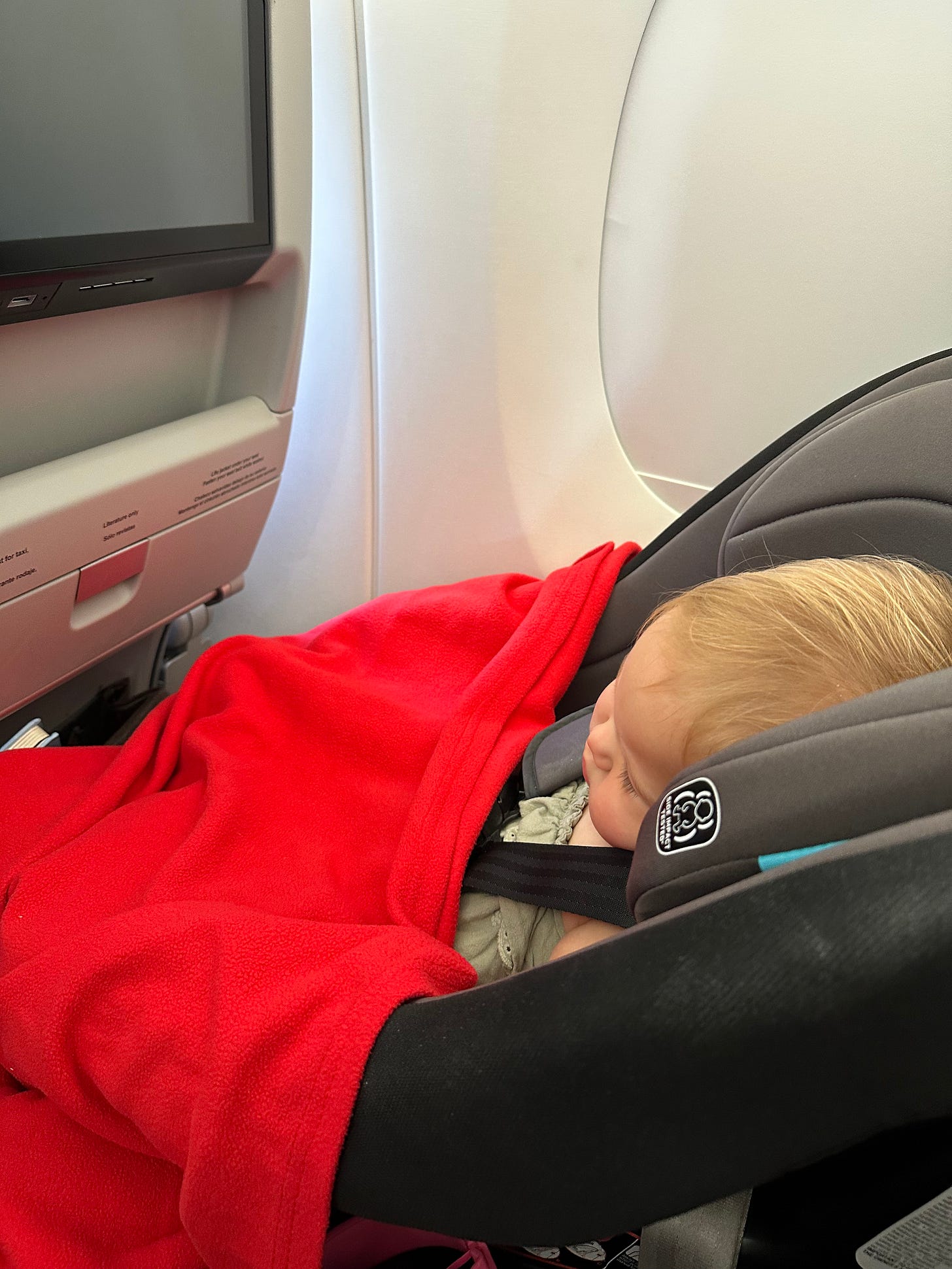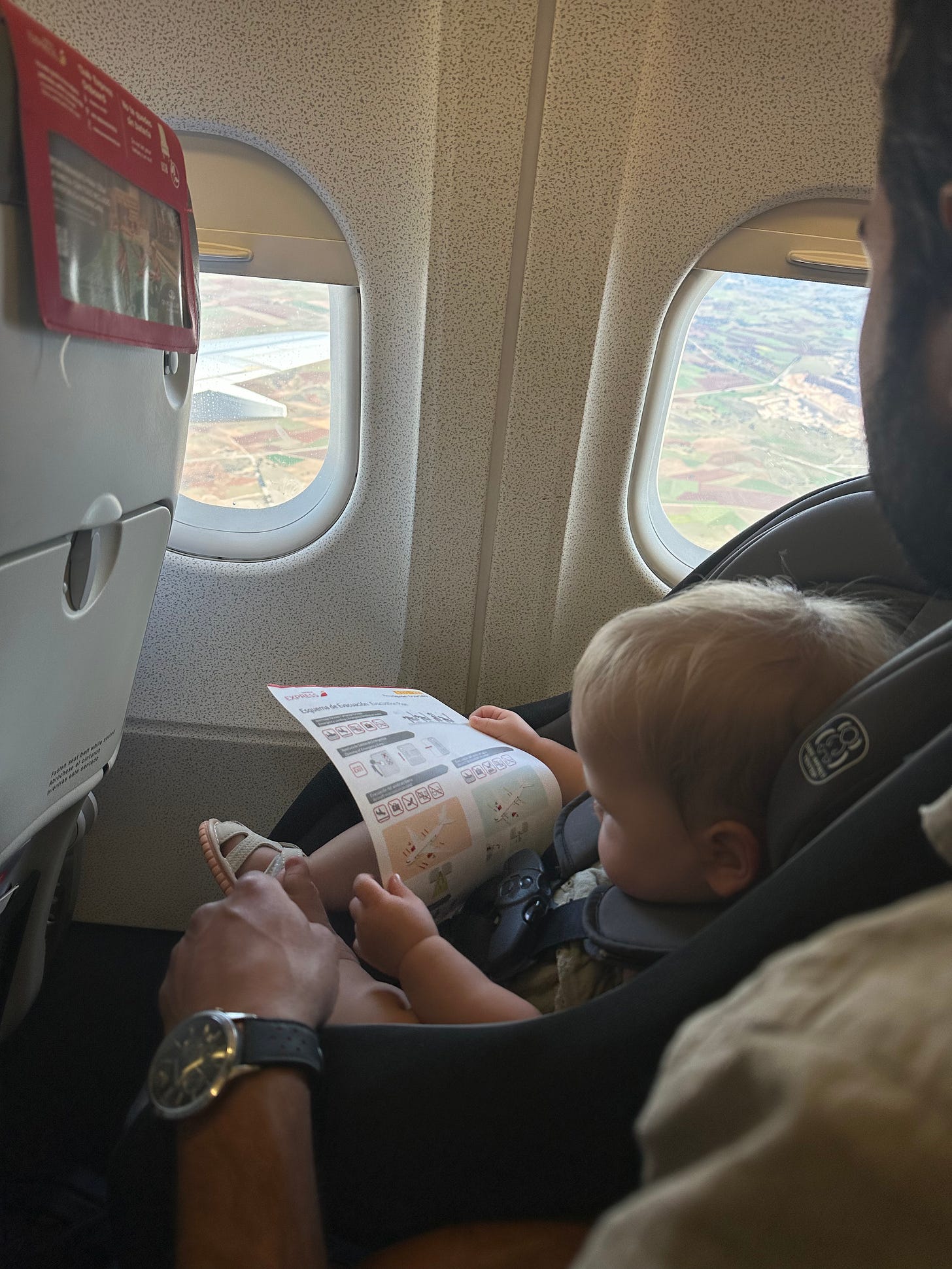Welcome to Carry On! To join 150+ other readers learning about traveling with kids, subscribe below:
I could come up with a long list of reasons why we should never break routine to travel with kids, especially across time zones.
Remember how difficult it was to sleep train them? The winding path to establishing a routine in the first place? What if the jet lag reverts all of that work back to square one?
In the waning newborn stage, while I was teetering on the balance beam of returning to work and just starting to consider traveling again, I found myself holding very tightly to the routine I had built.
On Sleep Schedules as a New Parent
Our personal set of experiences in the first few months of parenthood led me to become one of those parents who follow a schedule.
I actually felt bad about this. Disappointed.
I wanted to be a chill parent. I wanted my kid to nap on any surface, in any location, so we could travel anywhere, at any time.
After months of inner turmoil about being more regimented than I thought I would be, a fellow new mom helped me resolve the conflict between my need for a schedule and my desire to avoid spending days in nap jail.
“I’m just a better mom with a schedule,” she said with a confident shrug.
The total trust in her decision to be one of those parents who follow a routine was liberating.
On Adapting Routine for Travel: Consider the “Cadre”
So, what is a mom to do when she holds tight to her routine out of necessity but also wishes to leave the familiar behind to travel?
In Bringing Up Bébé, author Pamela Druckerman endeavors to reveal the wisdom of French parents and in doing so she introduces the concept of the cadre.
“The cadre (meaning ‘frame’ or ‘framework’) is the mental image that French parents have about how best to raise kids. They strive to be very strict about a few key things - that’s the frame. But inside the frame, they aim to give kids as much freedom as they can handle.”
One example is “At bedtime you have to stay in your room, but inside your room you can do whatever you want.” The frame provides clear expectations while flexibility is maintained within the expectations.
Taking the cadre on the road
After 20 flights with my now toddler, I’ve realized my methodology for traveling as a parent who relies on routine at home is some sort of meta-cadre.
The existing routine at home is the cadre. We reinforce expectations and routines that lend themselves to reliable nap times, mealtimes & bedtimes. When we leave our normal circumstances, the cadre still exists because we’ve done the work to put it in place. That’s the “strict” part.
When we go out into the world with our daughter, we trust the cadre. The “freedom” exists in the inevitable adjustments made when the cadre is taken out of context on an airplane, during a day trip, at the grandparents’ house or in an Airbnb.
And I’ve realized that having a schedule has, in fact, made travel with a child easier for me - not harder. The existence of the schedule provides the foundation; from there, we make exceptions and adjustments while we travel.
The Ultimate Travel Disruption: Time Zone Changes
Never have I needed to trust the cadre more than recently traveling across nine time zones with a sixteen-month-old child.
First, there was the unrelenting 10-hour overnight flight during which my daughter slept for one single hour (I slept zero). Upon landing in London, I considered just turning right back around and heading home since clearly this trip was destined to be ruined by a complete lack of sleep.
I’m glad I didn’t listen to my sleep-deprived self because something incredible happened. Our toddler ultimately adjusted to the time change even better than we did.
Four Mantras for Managing a Time Change
My most valuable learnings from navigating time differences (from 2 hours to 9 hours) with a small child.
1. Any sleep is good sleep.
People like to say that overnight flights are great because “Oh, the child will just sleep!” I beg to differ as every overnight flight we’ve done has been a sleepless adventure. Many of my mom friends also attest to this.
If your kid typically has a dark room & white noise when they sleep at home, like mine does, don’t expect them to magically fall asleep on the plane just because you built them a little tent, read them a book, put their sleep sack on and turned on the white noise machine (my mistake)!
The plane is an exciting environment and infants & toddlers experience FOMO; they tend to want to stay awake after their usual bedtime even if the rest of the plane is sleeping.
Reminding myself that any sleep is good sleep helps keep expectations low. At home, 3 hours of sleep in a 24-hour period (this actually happened) would be considered a disaster. On the road, any sleep is a win.
2. Don’t force the schedule. You can always adjust.
I learned this one the hard way. On our flight to London, I spent six hours (you read that right) trying to get Mila to sleep. It was past her bedtime, after all, and I simply could not remove the notion from my head that she had to sleep.
My daughter had other ideas. We spent those long hours in a daze of crying, screaming, playing, snacking, and chatting with a lovely Scottish grandmother who held her for a bit while I took a breather. Only when I finally gave up on trying to get her to sleep did she actually go down.
In retrospect, my only regret was forcing it. I’ve done enough flights now to know that the end outcome likely would have been the same - minimal sleep - but that I could have been in a better headspace had I stopped trying to force the sleep to happen.
This applies once you arrive at your destination, too. In Mallorca, for example, our schedule was priced to perfection. After days of running ourselves ragged trying to time naps perfectly with car rides from one island destination to the next, we hit a breaking point and had to reevaluate just how much we were trying to do on this trip. No matter how perfectly I planned the schedule, some days Mila took three naps instead of her usual one nap and you know what, it turned out fine. Which leads me to…
3. Trust your kid.
Children’s body clocks are a marvel. After a full day of barely sleeping on our flights, Mila adjusted to the new time zone beautifully. She cried in her sleep a few times the first night or two, but she didn’t wake up.
Her naps also changed drastically on our recent trip but amazingly it was not an issue. Sometimes she would nap until as late as 8pm while we drove back to our Airbnb from a day out on the island and she would still go to bed at 10pm. This would be much more difficult to imagine happening at home.
I credit some of this to the cadre and having a foundation of consistent sleep patterns that she could fall back on. I credit the busyness and excitement of our trip which tired her out enough to sleep well. But I also credit my daughter herself. She exceeded any expectations for handling such a significant change to her norm and my confidence in her ability to adjust is higher than ever.
4. Use the time change to your advantage.
When we travel from the West Coast to the East Coast, my favorite thing to do is to keep our daughter on Pacific Time. Instead of a 7am-7pm PT day, she lives a 10am-10pm ET day. This not only makes the time difference virtually nonexistent, but it also allows us to have quiet time in the morning and dinners out later at night.
When the time change is wider than 3 hours or maybe you’re going East Coast to West Coast, think critically about the schedule you want to keep while traveling. Maybe it’s worth fully adjusting your child to the new time zone, or maybe you use the trip as an opportunity to get up earlier/later and stay up earlier/later than you would at home.
Some Small Tips for Time Zone Changes
Practical tips & tools for managing time zones and jet lag with kids.
On the first day, stay up until a normal bedtime in the local timezone.
Get exposure to natural light / the outdoors as soon as you arrive in the destination.
Try the Timeshifter App (though it’s better for adults than children, in my opinion).
Prompt ChatGPT for sample child sleep schedules based on time zones.
Keep everyone hydrated during travel & immediately upon arrival.
Re-create sleep conditions from home to the extent possible; same lovey, same sleep sack, sheets from home for the pack & play, white noise machine.
From Around the World of Parent Travel:
A book. The idea of Worldschooling, while probably unrealistic for our circumstances, greatly appeals to me. I just ordered this book to start gathering inspiration for how to implement worldschooling principles into a more traditional lifestyle.
An article. Travel + Leisure stole my idea to make a list of the best places to travel by kid’s age, but the age buckets (1-4 years? really?) leave something to be desired.
A blog. Jayne Gorman travels with her four-year-old son and built a great list of family-friendly Airbnbs in Europe that I am bookmarking.
A podcast: On Good Inside with Dr. Becky, KC Davis says “a routine is an expectation, a pattern is a tool” which got me thinking about leaning into patterns over routines when traveling with kids.
Coming up: travel for the holidays & navigating the trips we “have” to take.
Thank you for reading!
p.s. you can always see all posts on the website





